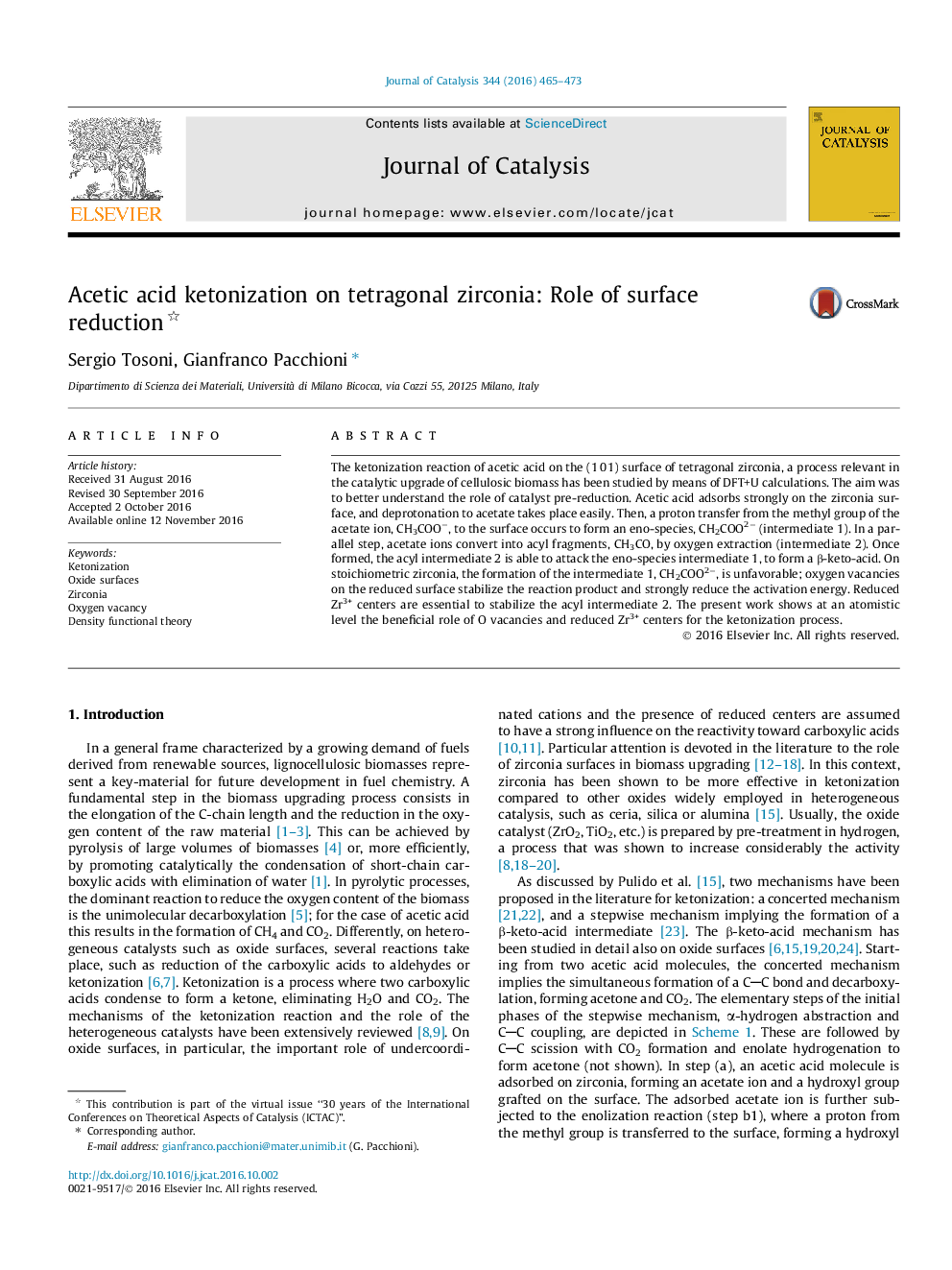| Article ID | Journal | Published Year | Pages | File Type |
|---|---|---|---|---|
| 6455856 | Journal of Catalysis | 2016 | 9 Pages |
â¢Ketonization occurs more easily on the surface of zirconia when this has been pre-reduced.â¢Reduction can occur via H2 adsorption or H2O desorption from an hydroxylated surface.â¢Reduction of ZrO2 results in exposed Zr3+ ions or in point defects (oxygen vacancies).â¢The reduced surface leads to more stable intermediates and lower activation barriers.
The ketonization reaction of acetic acid on the (1 0 1) surface of tetragonal zirconia, a process relevant in the catalytic upgrade of cellulosic biomass has been studied by means of DFT+U calculations. The aim was to better understand the role of catalyst pre-reduction. Acetic acid adsorbs strongly on the zirconia surface, and deprotonation to acetate takes place easily. Then, a proton transfer from the methyl group of the acetate ion, CH3COOâ, to the surface occurs to form an eno-species, CH2COO2â (intermediate 1). In a parallel step, acetate ions convert into acyl fragments, CH3CO, by oxygen extraction (intermediate 2). Once formed, the acyl intermediate 2 is able to attack the eno-species intermediate 1, to form a β-keto-acid. On stoichiometric zirconia, the formation of the intermediate 1, CH2COO2â, is unfavorable; oxygen vacancies on the reduced surface stabilize the reaction product and strongly reduce the activation energy. Reduced Zr3+ centers are essential to stabilize the acyl intermediate 2. The present work shows at an atomistic level the beneficial role of O vacancies and reduced Zr3+ centers for the ketonization process.
Graphical abstractDownload high-res image (98KB)Download full-size image
